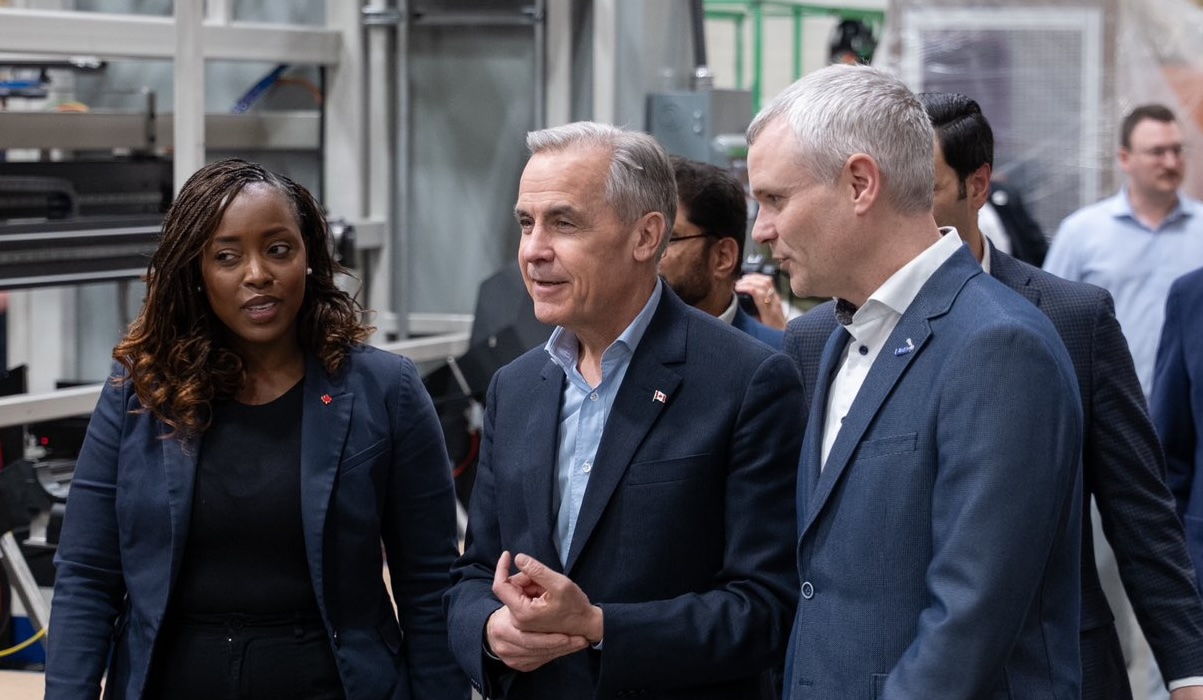Already a subscriber? Make sure to log into your account before viewing this content. You can access your account by hitting the “login” button on the top right corner. Still unable to see the content after signing in? Make sure your card on file is up-to-date.
Canadian Prime Minister Mark Carney has unveiled a $130-billion economic and defense plan, presenting it as a necessary response to tensions with the United States and a move to safeguard Canada’s sovereignty, bolster the economy, and invest in critical infrastructure.
Some shit you should know before you read: If you’re unaware, there’s an election coming up in Canada, and it’s turned into an unexpectedly tight race—largely fueled by President Donald Trump’s rhetoric about Canada’s sovereignty. Trump has openly suggested that Canada should become part of the United States, arguing that the countries are already so economically intertwined that the border “barely exists” and “doesn’t make sense anymore.” He’s claimed that Canada’s natural resources, strategic location, and cultural overlap make annexation “a logical next step,” even going so far as to question the legitimacy of the border itself. These comments have angered many Canadians and injected a sense of urgency into the campaign, with Prime Minister Mark Carney framing his leadership as a wall against American overreach. The remarks have reignited nationalist sentiment and dramatically shifted the political landscape—tightening the race between Carney and Conservative leader Pierre Poilievre, who was previously favored to win amid public frustration over Justin Trudeau’s leadership.

What’s going on now: In an announcement, Prime Minister Carney laid out a $130-billion plan aimed at reshaping Canada’s economy and reinforcing its sovereignty in the face of rising global instability. The plan is centered on three primary investment pillars: defense, infrastructure, and housing—each designed to tackle what Carney describes as “the biggest crisis of our lifetimes.” Defense spending alone accounts for $30.9 billion over the next four years, with the goal of exceeding NATO’s 2% GDP target by 2030. The funds will be used to expand Arctic military presence, invest in new submarines, drones, and icebreakers, and modernize Canada’s defense capabilities through advanced technologies like quantum computing and AI. This includes equipping troops with modern artillery, improving housing on military bases, and bolstering Canada’s northern defenses against Russian and Chinese encroachment.
Foreign policy and trade diversification also play a significant role in the platform, reflecting Carney’s response to what he calls a “reckless and unjustified” US trade war. A new trade diversification fund will help Canadian exporters pivot away from the increasingly tariff-heavy US market. The plan includes breaking down domestic trade barriers between provinces, strengthening the agriculture and auto sectors, and building new trade relationships with Europe, Asia, MERCOSUR, and ASEAN.
On the infrastructure front, over $20 billion is earmarked for “nation-building” projects. This includes significant upgrades to trade corridors, digital infrastructure, Arctic development, and healthcare facilities. The goal is to stimulate economic growth while making Canada more self-reliant and competitive. A key component is the Build Canada Homes agency, which will receive $11.8 billion to accelerate affordable housing construction. An additional $6 billion will be provided to municipalities to lower development charges and improve housing-related infrastructure, while a $4.1-billion rental housing tax incentive aims to expand rental supply in high-demand areas.
This all comes as Carney’s challenger, Conservative Leader Poilievre, criticized the $130-billion plan, dismissing it as a “spending bonanza” that Canada “simply can’t afford.” While Poilievre himself has proposed increased defense spending, he has called for deep cuts to “wasteful” foreign aid and government consulting as offsets, pledging a leaner, more “accountable” federal government.






